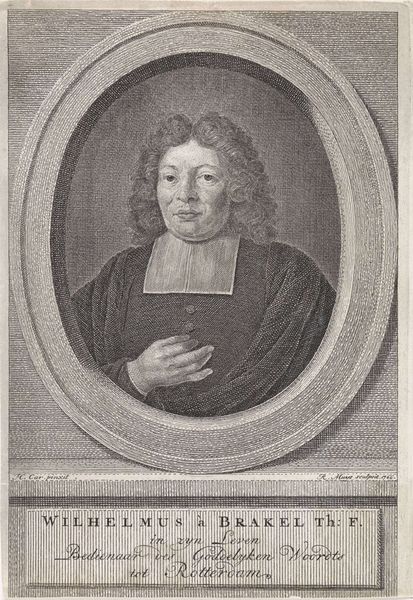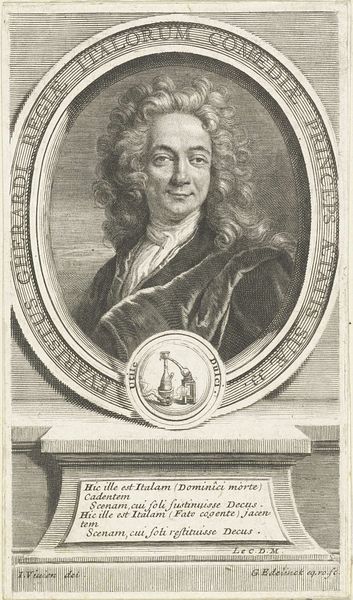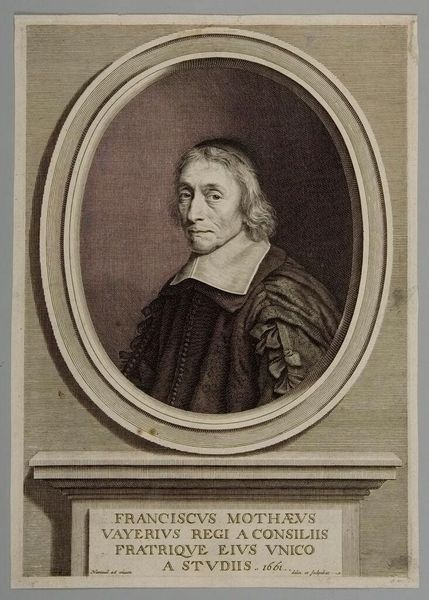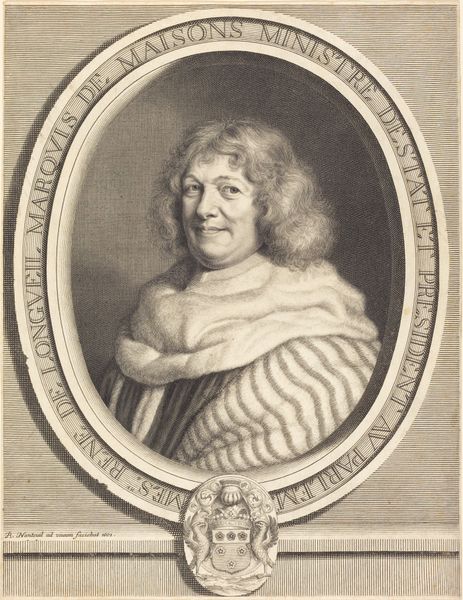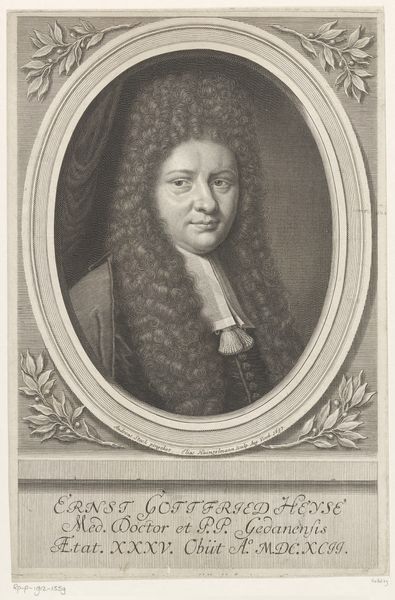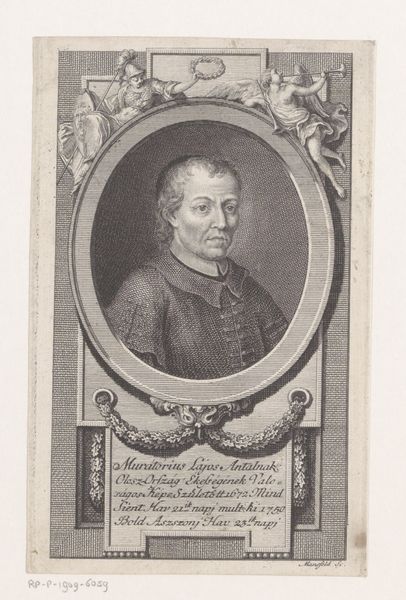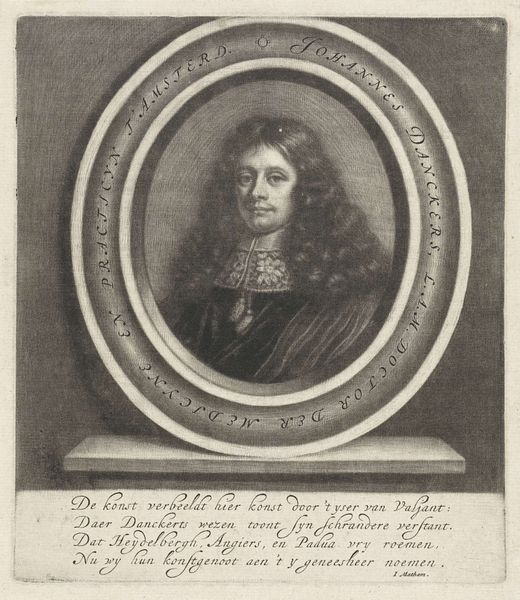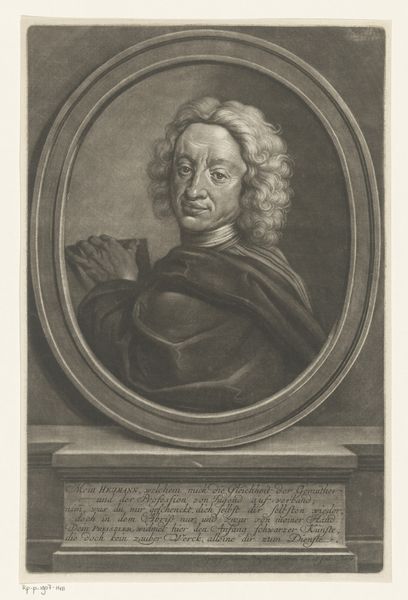
drawing, print, engraving
#
portrait
#
drawing
#
baroque
# print
#
figuration
#
line
#
engraving
Dimensions: height 363 mm, width 245 mm
Copyright: Rijks Museum: Open Domain
This is an engraving from 1682 by Richard Collin, portraying the Spanish painter Bartolomé Esteban Murillo. It offers insight into the self-fashioning of artists and the marketing of their images in the 17th century. Produced in Antwerp, then a major center for printmaking and artistic exchange, the portrait highlights Murillo's rising fame across Europe. Framing him in an oval cartouche atop a pedestal, Collin uses conventions that suggest the elevated status of the artist. The Latin inscription reveals that Nicolaus Omazurinus from Antwerp commissioned Collin to make this print after Murillo painted a self-portrait for his children. Prints like this one helped circulate an artist's likeness and reputation. Art historians analyze such images alongside paintings, archival documents, and other sources to understand the social conditions that shaped artistic production and the institutional structures that supported it. This portrait reminds us that artistic fame is always a product of social relations.
Comments
No comments
Be the first to comment and join the conversation on the ultimate creative platform.

